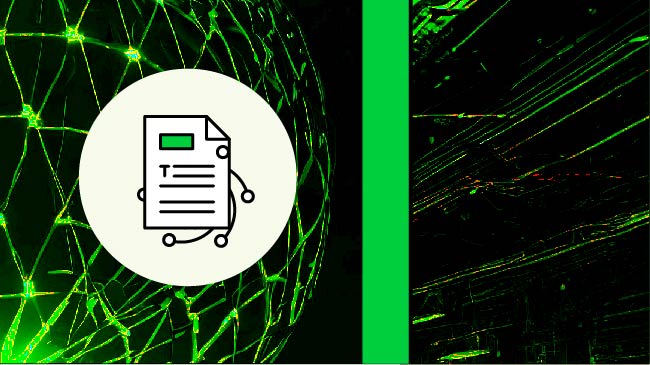The Mainframe in Asia-Pacific: Challenges, Trends and Opportunities
Dallas Newton, regional director for Vertali APAC, assesses the state of the platform in a growing market

The mainframe continues to retain its status as a cornerstone of IT infrastructure around the world, and the Asia-Pacific region is no exception. Set to grow at a rate of almost 10% a year to 2031, the region accounts for almost one-quarter of the global mainframe market.
Thirty or more years ago there was a proliferation of mainframes—large and small—in the region, as well as various midrange computers in the market (e.g., AS/400 and Unix). Back then, there were many more equipment manufacturers, including Fujitsu, Hitachi, Amdahl and Unisys. Today, we’re really only talking about one, IBM, and the operating system z/OS (well, maybe also z/VM and zLinux).
Organizations started moving off the smaller mainframes to client/server environments and the lure of UNIX and Windows, mainly driven by cost and emerging technical skill considerations. Operating systems like DOS, VSE, z/VSE and OS/400 are gradually disappearing alongside the smaller mainframe platforms. Meanwhile, issues including downsizing and operational cost savings became front of mind, and sometimes entire sectors—such as manufacturing—moved to more cost-effective geographies.
Today, many smaller z/OS sites are working through outsourcers to benefit from consolidated licensing and operational cost savings. The larger mainframe users are typically found in government, semi-government, financial services organizations such as banking and insurance, and telecommunications, where some transformations off the platform have proved to be expensive, abject failures, or both.
It’s possibly a similar pattern across the region; I suspect the mainframe footprint in banking and finance is even greater in Southeast Asian countries and Japan, for example. We’re seeing the continued rise of China in mainframes, both in producing hardware and in the country’s own use of mainframe technology.
The Mainframe Increases Its Footprint
So, what are some of the other key trends we’ve seen over the last few years that continue to affect us today in the Asia-Pacific region? As you might expect, we’re subject to many of the same issues and challenges as other regions, but with some local variations.
Like the U.S. and Europe, we’ve had many years of organizations saying they plan to sunset the mainframe but, in many cases, it hasn’t happened. In its 60th year and beyond, the mainframe not only continues to be essential to the operations of many organizations, it’s actually increased its importance and footprint. Becoming a hub for digital transformation, it supports:
- Modernization initiatives such as DevOps
- Multiple operating systems such as Unix/Linux
- The transfer of some workloads to specialized processors such as ziiP
- Open-source technologies such as Java, Git and Jenkins
- Enhanced security features including multi-factor authentication (MFA), cryptography and quantum-safe processing
Emerging Technologies and Applications
Indeed, the last few years have seen the increasing use of mainframes with new and emerging technologies and applications, such as artificial intelligence (AI), machine learning, big data, natural language processing (NLP) and blockchain. There’s now a great deal of crossover between the mainframe and the open-source community, drawing on key mainframe design principles of security, stability, sustainability and performance. Interoperability and hybrid infrastructure are the name of the game.
Speaking of which, there’s an increasing use of hybrid and cloud solutions, which influence where best to consume processing power. Some applications, like customer relationship management (CRM), human resources (HR) and finance, are good candidates for the cloud. But secure transaction-intensive applications like large-scale data processing, banking, payments and credit cards are still perfect for mainframe processing. And in a climate of rising cybercrime and increased internal and external threats, there’s growing demand for more innovative and effective security measures as organizations work toward a zero trust stance.
Addressing the Skills Gap
The final trend I can mention will, I’m sure, come as no surprise. As it seems similar elsewhere in the world, there’s a lack of available technical expertise and experience when it comes to managing and optimizing mainframe installations in the region. Programs developed to address this skills gap include the new IBM-sponsored Mainframe Skills Council, which counts Vertali one of its founding members.
What we’re seeing in the field, and what I’m hearing in my conversations with mainframe professionals in all sectors, is a continued appetite for mainframe operations and modernization, resulting in a high demand for expertise, skills and support in areas ranging from security and cyber resilience to software migration/consolidation, modernization and optimization projects.
Evolving to Meet New Demands
In summary, despite the advent of alternatives, the mainframe has continued to evolve its unique, robust, scalable and secure architecture. Particularly suited to critical commercial and government sectors, it has embraced change and expanded its capabilities to connect and collaborate with the open-systems world. The mainframe today is leveraging its inherent capabilities to provide a single platform to run all workloads—a platform that is one of the most secure, scalable and, possibly for large enterprises, the most cost-effective computing platform available today.